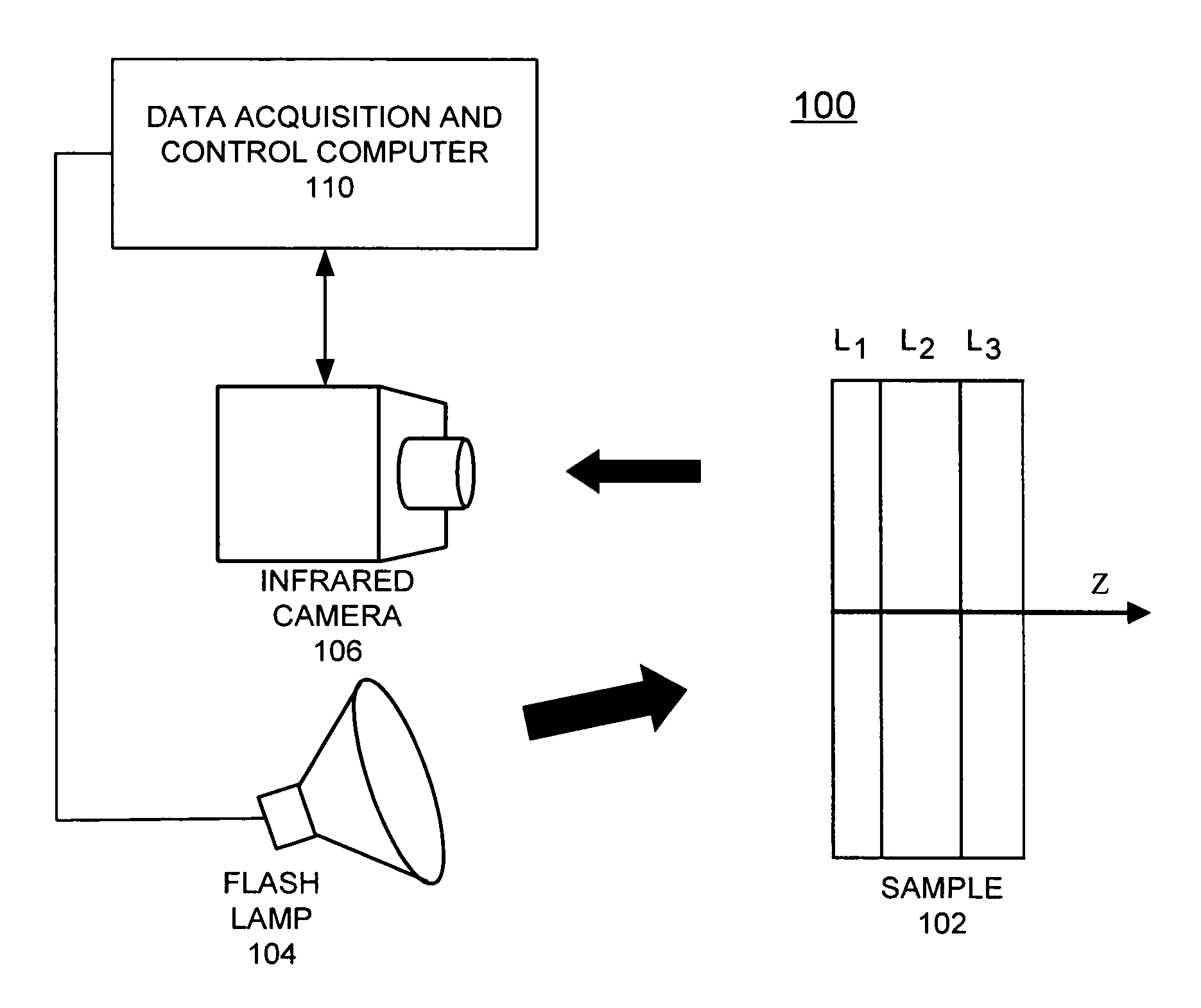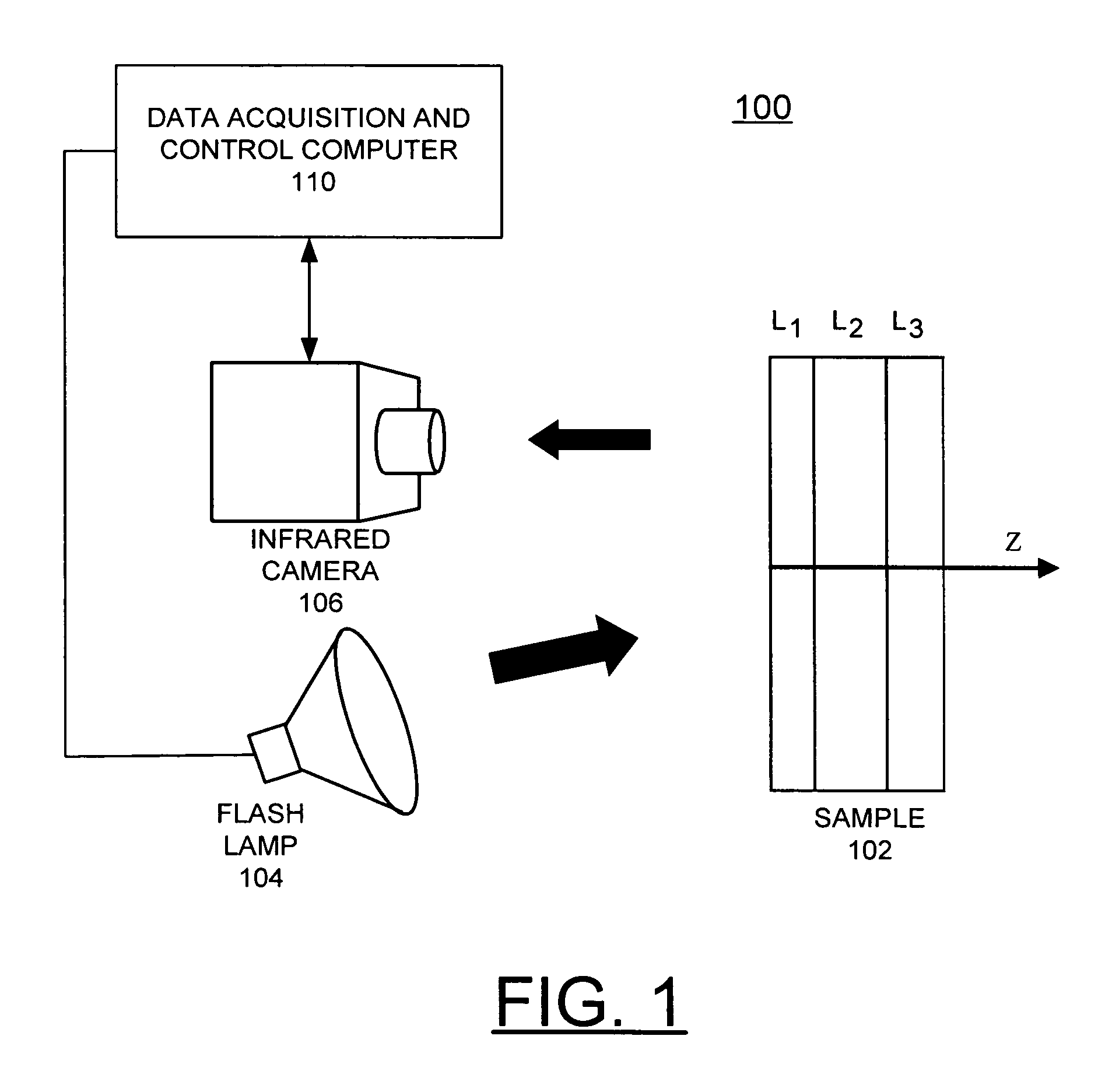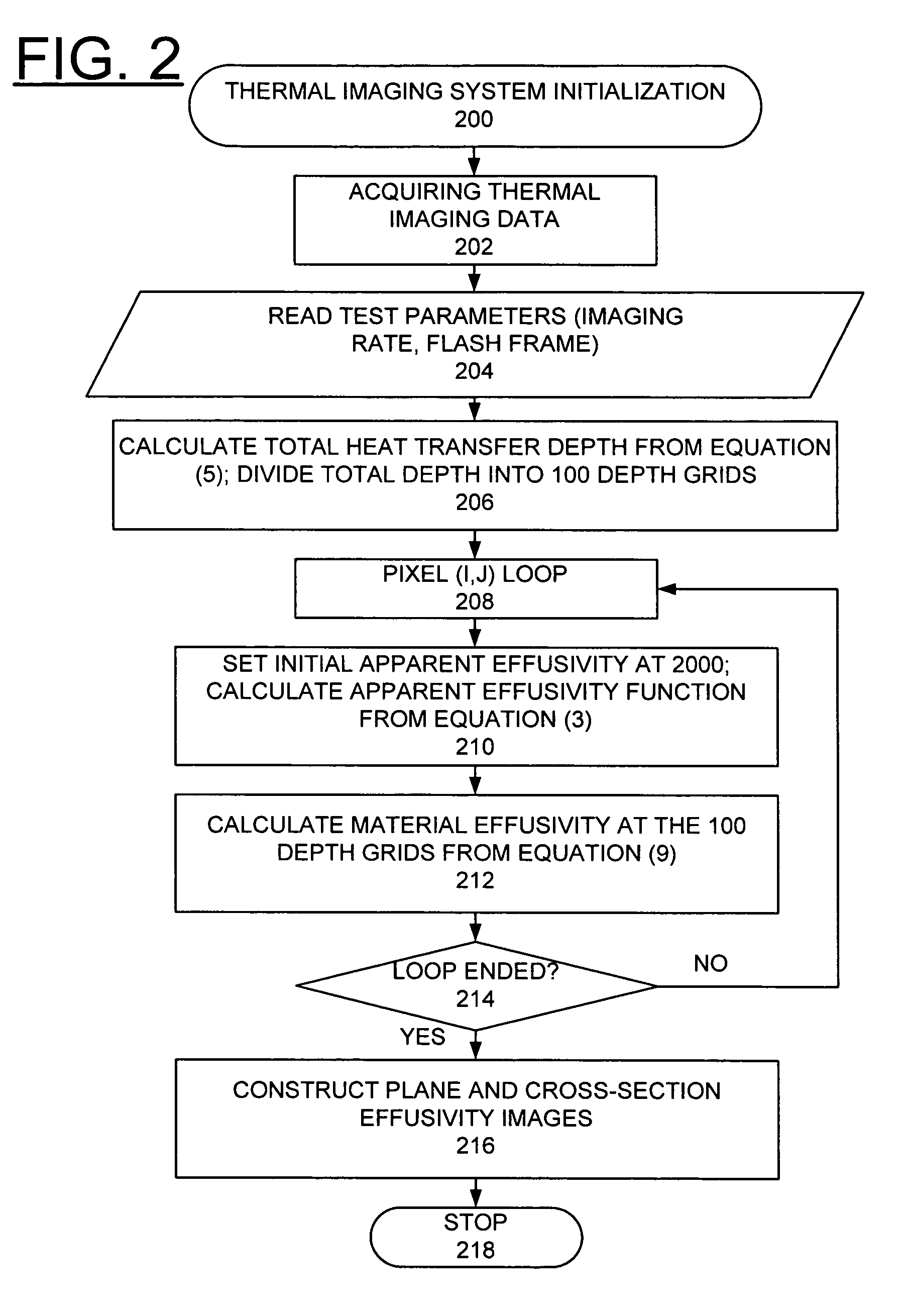Method for thermal tomography of thermal effusivity from pulsed thermal imaging
- Summary
- Abstract
- Description
- Claims
- Application Information
AI Technical Summary
Benefits of technology
Problems solved by technology
Method used
Image
Examples
Embodiment Construction
[0028]In accordance with features of the invention, a thermal tomography method converts the temporal series of 2D surface temperature data into a spatial 3D distribution of material effusivity under the surface.
[0029]In comparison, conventional thermal imaging methods only process the surface temperature in temporal domain to determine one or a few parameters at each surface position (a pixel in a 2D image) based on a model of the material system; these methods are considered 2D methods because they cannot provide the distribution of material property under the surface. For example, several methods were developed to detect crack, or delaminations, depth under the surface and the predicted depths at all surface positions are usually presented as a 2D depth map for the surface. Recently, a method for multi-layer materials was developed by the present inventor to determine multiple material parameters including conductivity, optical transmission, and thickness and / or crack depth for e...
PUM
 Login to View More
Login to View More Abstract
Description
Claims
Application Information
 Login to View More
Login to View More - R&D
- Intellectual Property
- Life Sciences
- Materials
- Tech Scout
- Unparalleled Data Quality
- Higher Quality Content
- 60% Fewer Hallucinations
Browse by: Latest US Patents, China's latest patents, Technical Efficacy Thesaurus, Application Domain, Technology Topic, Popular Technical Reports.
© 2025 PatSnap. All rights reserved.Legal|Privacy policy|Modern Slavery Act Transparency Statement|Sitemap|About US| Contact US: help@patsnap.com



